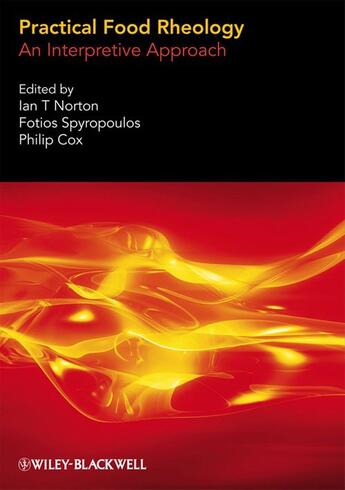Faites votre choix parmi les 20 romans en lice !
Passionné(e) de lecture ? Inscrivez-vous
gratuitement ou connectez-vous pour rejoindre la
communauté et bénéficier de toutes les fonctionnalités du site !

Rheology is fundamentally important in food manufacturing in two major senses. Understanding the way in which a substance moves and behaves is essential in order to be able to transport and mix it during processing. Secondly, the rheology of a product dictates much of the consumer experience, e.g. in relation to texture and mouthfeel.This book doesnt overwhelm the reader with complex mathematical equations but takes a simple and practically-focused approach, interpreting the implications of rheological data for use in different food systems. Through this approach industry-based food developers / rheologists, students, and academics are given clear, concise interpretation of rheological data which directly relates to actual perceived functionality in the food.The functionality may relate to texture, structure and mouthfeel, and may result as a function of temperature, pH, flocculation, concentration effects, and mixing.The interpretative view is based on the principle that the food rheologist will produce a graph, for example of viscosity or gelation profiling, and then have to extract a practical meaning from it.For example, if viscosity falls with time as a function of pH, this knowledge can be used to tell the customer that the viscosity can be followed with just a pH meter and a stopwatch. Rheological measurements have shown that once the pH has dropped 1 unit after 10 minutes, the viscosity has been halved.This is the type of practical and valuable information for customers of the industrial food rheologist which the book will enable readers to access.Key features:A uniquely practical approach to the often difficult science of food rheologyIncludes chapters introducing the basics of food rheology before moving on to how data can be usefully and easily interpreted by the food scientistCan be used as a teaching aid on academic or industry-based courses
Il n'y a pas encore de discussion sur ce livre
Soyez le premier à en lancer une !

Faites votre choix parmi les 20 romans en lice !

Tentez vite votre chance pour gagner l'une des 15 bandes dessinées sélectionnées par le jury

Une interview des auteurs, un défi écriture et des livres à gagner !

Propriétaire d'une maison à Brooklyn héritée de son arrière grand-père, esclave enfui à New York, Eve Melville découvre la maison peinte en noir...